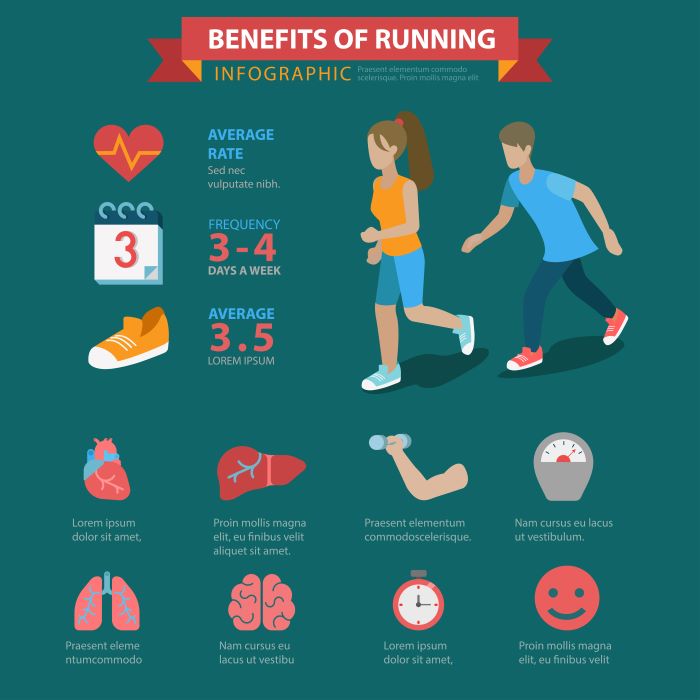Achieving optimal running fitness involves much more than just putting one foot in front of the other. It’s essential to understand the various factors that can significantly impact your performance and progress on the trails. Here are some key elements to consider:
- Consistency: Regular training is crucial. Skipping workouts can hinder your body’s adaptation and improvement.
- Nutrition: What you eat directly affects your energy levels and recovery. A balanced diet rich in carbohydrates, proteins, and fats can enhance performance.
- Rest and Recovery: Overtraining can lead to injuries. Ensuring adequate rest days allows your body to heal and grow stronger.
- Running Technique: Proper form plays a vital role in efficiency. Evaluating and improving your running mechanics can lead to better performance.
- Environmental Factors: Weather, terrain, and altitude can influence your runs. Adapting your training to these conditions is vital for improvement.
Understanding these factors will empower you to make more informed decisions about your running routine. By addressing areas that may be holding you back, you can start seeing **significant improvements** in your fitness levels.
Visit our website to learn more and get started today! Click here.
Common Mistakes That Hinder Progress

Many runners unknowingly make mistakes that can stall their progress and affect their overall running fitness. Identifying these common pitfalls is the first step towards improvement. Here are some frequent errors:
- Neglecting Warm-Ups: Skipping warm-up exercises can lead to injuries and reduced performance. Always take time to prepare your body for running.
- Ignoring Pain: Pushing through pain can exacerbate injuries. It’s crucial to listen to your body and address any discomfort early on.
- Sticking to the Same Routine: Repeating the same workouts can lead to a plateau. Mixing up your training with intervals, hills, and long runs enhances fitness levels.
- Not Tracking Progress: Failing to monitor your runs can make it difficult to see improvements. Keeping a log can help you identify trends and adjust your training accordingly.
- Overemphasis on Speed: While speed is important, focusing solely on it can compromise your form and endurance. Incorporating various paces into your training is vital for balanced development.
Avoiding these mistakes can lead to more effective training sessions and better overall performance. By recognizing and correcting these issues, you set yourself up for success on your running journey.
The Importance of Proper Training Plans

Having a well-structured training plan is essential for any runner looking to enhance their running fitness. A proper training plan not only ensures systematic progression but also helps in preventing injuries. Here’s why it’s so important:
- Goal-Oriented Approach: A training plan allows you to establish clear, achievable goals. Whether you’re training for a 5K or a marathon, having specific targets helps keep you motivated.
- Balanced Workouts: A good plan incorporates a variety of workouts, such as endurance runs, speed work, and recovery days. This balance is crucial for developing different aspects of your fitness.
- Progress Monitoring: With a structured plan, you can track your progress over time. This helps in identifying what works and what doesn’t, allowing for necessary adjustments.
- Injury Prevention: Gradually building intensity and volume reduces the risk of overuse injuries. A proper plan schedules rest days and recovery runs, which are critical for muscle repair.
- Time Management: Having a plan helps you allocate time effectively, ensuring that you fit your training into your busy schedule without compromising other commitments.
Ultimately, investing time in creating or following a training plan can significantly enhance your running experience. It’s not just about running more miles; it’s about running smarter and reaping the rewards of your efforts.
Nutrition’s Role in Running Performance

The link between nutrition and running performance is undeniable. What you consume can significantly impact your energy levels, recovery times, and overall fitness. Here are some key aspects of how nutrition plays a vital role in enhancing running performance:
- Fueling Your Runs: Carbohydrates are the primary source of energy for runners. Consuming adequate carbs before a run ensures that your glycogen stores are full, providing the stamina needed for endurance.
- Optimal Recovery: Post-run nutrition is critical for recovery. Including protein in your post-run meal helps repair muscle tissues and promotes recovery, while carbohydrates replenish glycogen stores.
- Hydration: Staying hydrated is crucial for maintaining performance. Dehydration can lead to fatigue, decreased coordination, and impaired judgment. Drink water consistently throughout the day and consider electrolyte-rich drinks during long runs.
- Vitamins and Minerals: Nutrients like iron, calcium, and magnesium play a significant role in muscle function and energy metabolism. A well-balanced diet rich in fruits, vegetables, and whole grains ensures you get the necessary vitamins and minerals to support your running.
- Weight Management: Proper nutrition helps maintain a healthy weight, which can enhance your running economy. Eating the right portion sizes and focusing on nutrient-dense foods can help you achieve optimal body composition.
Incorporating these nutritional principles into your routine can lead to improved performance and a more enjoyable running experience. Remember, what you eat is just as important as how you train.
Incorporating Recovery for Optimal Results
In the pursuit of better running fitness, many runners often overlook a crucial component: recovery. Proper recovery practices are essential for enhancing performance and preventing injuries. Here are several strategies to effectively incorporate recovery into your running routine:
- Active Recovery: Light activities, such as walking, cycling, or yoga, can help maintain blood flow and speed up the recovery process. Engaging in active recovery days allows your muscles to recuperate without complete rest.
- Rest Days: Scheduling regular rest days is vital for allowing your body to repair itself. Overtraining can lead to fatigue and injury, so it’s important to listen to your body and take breaks as needed.
- Stretching and Foam Rolling: Incorporating stretching and foam rolling into your routine aids in reducing muscle tension and improving flexibility. These practices can enhance your range of motion and alleviate soreness after intense workouts.
- Sleep Quality: Never underestimate the power of a good night’s sleep. Sleep is when your body does most of its recovery work. Aim for 7-9 hours of quality sleep each night to support muscle repair and overall health.
- Nutrition Post-Run: As mentioned earlier, fueling your body correctly after runs is crucial. Consuming a combination of carbohydrates and protein within 30 minutes of finishing your run can significantly improve recovery times.
By integrating these recovery strategies into your training regimen, you can optimize your results, enhance performance, and maintain a sustainable running journey. Remember, recovery is not just a luxury—it’s a necessity for every dedicated runner.
Setting Realistic Goals for Running Improvement

Establishing clear and attainable goals is vital for anyone looking to enhance their running fitness. Setting realistic goals helps maintain motivation and creates a clear path towards improvement. Here are some effective strategies for establishing goals that can lead to significant running progress:
- SMART Goals: Utilize the SMART criteria—Specific, Measurable, Achievable, Relevant, and Time-bound. For example, instead of stating “I want to run faster,” a SMART goal would be “I want to improve my 5K time by 2 minutes in the next 3 months.” This clarity fosters a focused approach.
- Short-term vs. Long-term Goals: Break your goals down into manageable short-term and long-term objectives. Short-term goals can include completing a certain number of runs per week, while long-term goals can be training for a half-marathon or marathon.
- Track Progress: Keep a running log to track your progress. Documenting your runs helps you see improvements over time and can provide motivational boosts on tough days.
- Stay Flexible: Life can be unpredictable. Be prepared to adjust your goals as necessary, especially if you encounter setbacks or changes in your schedule.
- Celebrate Milestones: Don’t forget to celebrate your achievements, no matter how small. Acknowledging your progress keeps you motivated and encourages further improvement.
Setting realistic goals is a key component in the journey toward enhanced running fitness. By defining your objectives clearly, tracking your progress, and celebrating successes, you’ll find the joy in every run. Visit our website to learn more and get started today! Click here.


